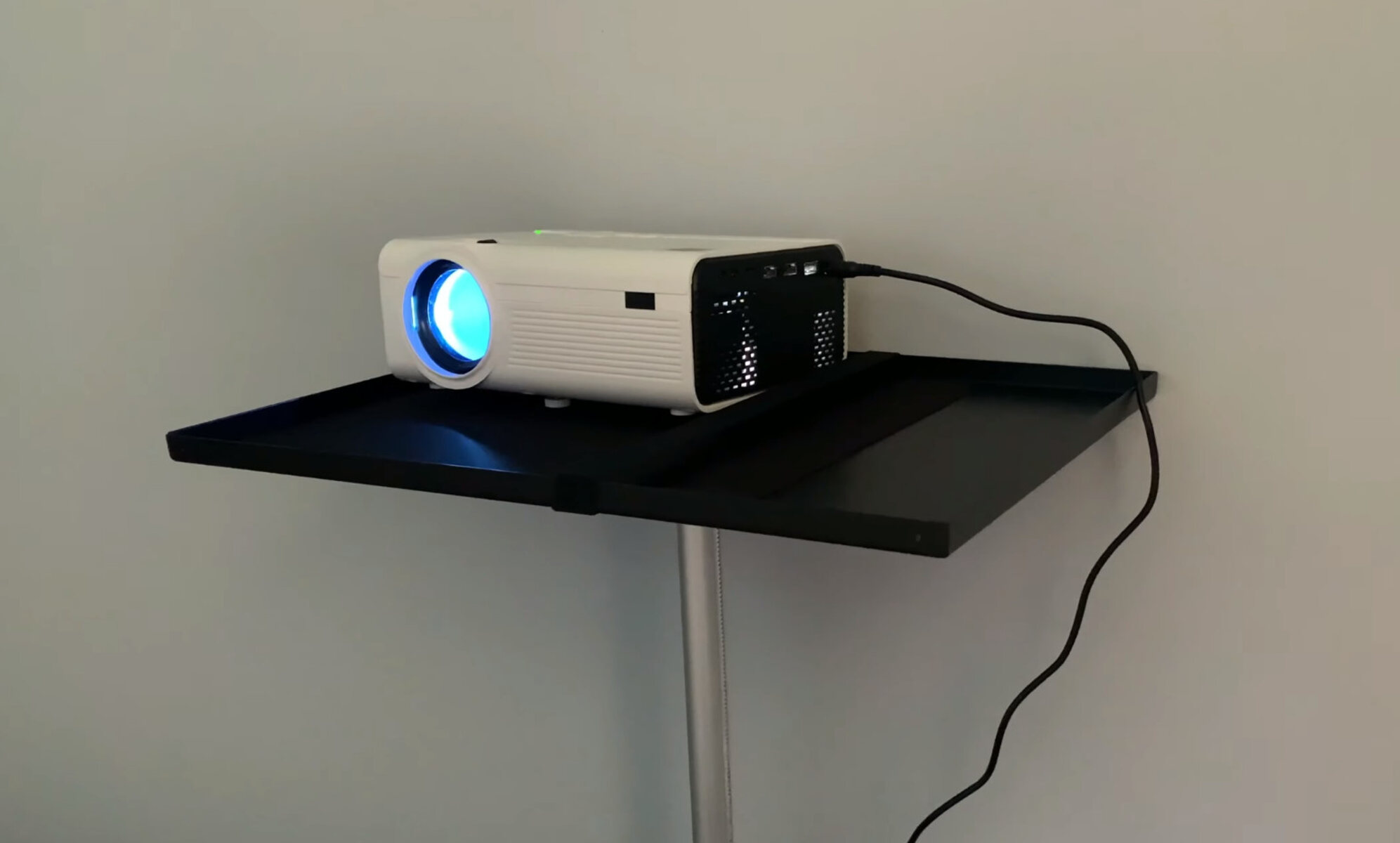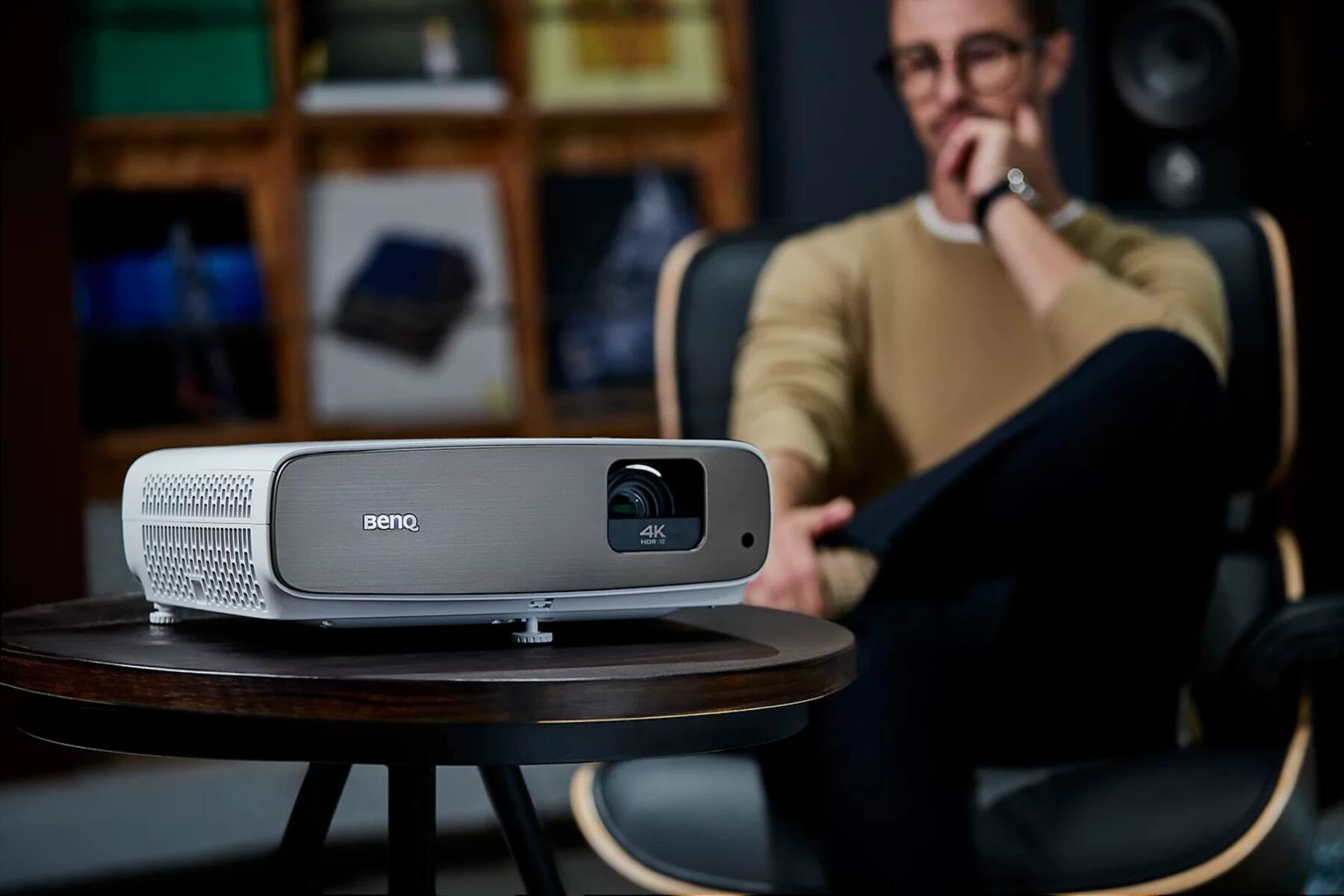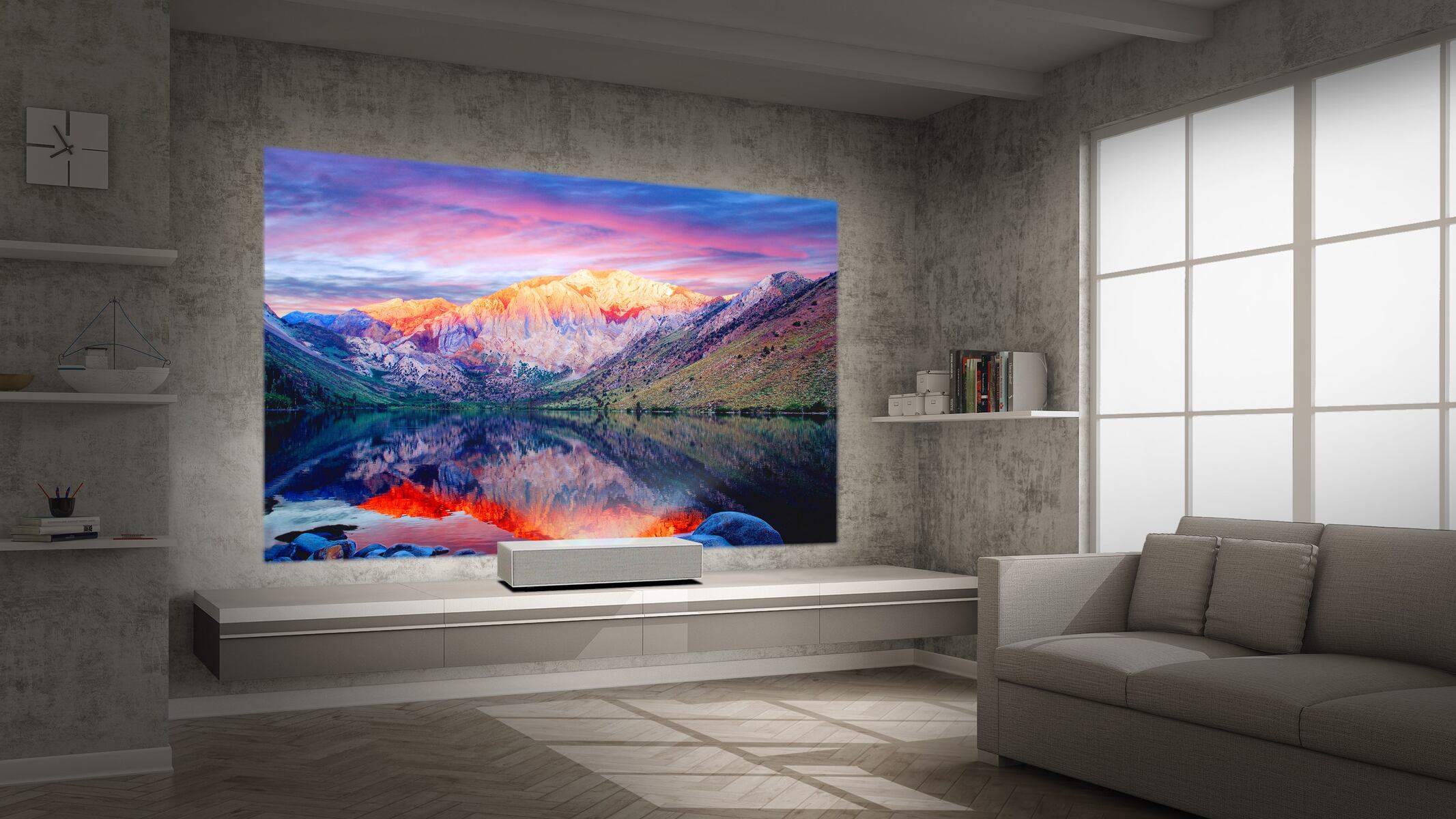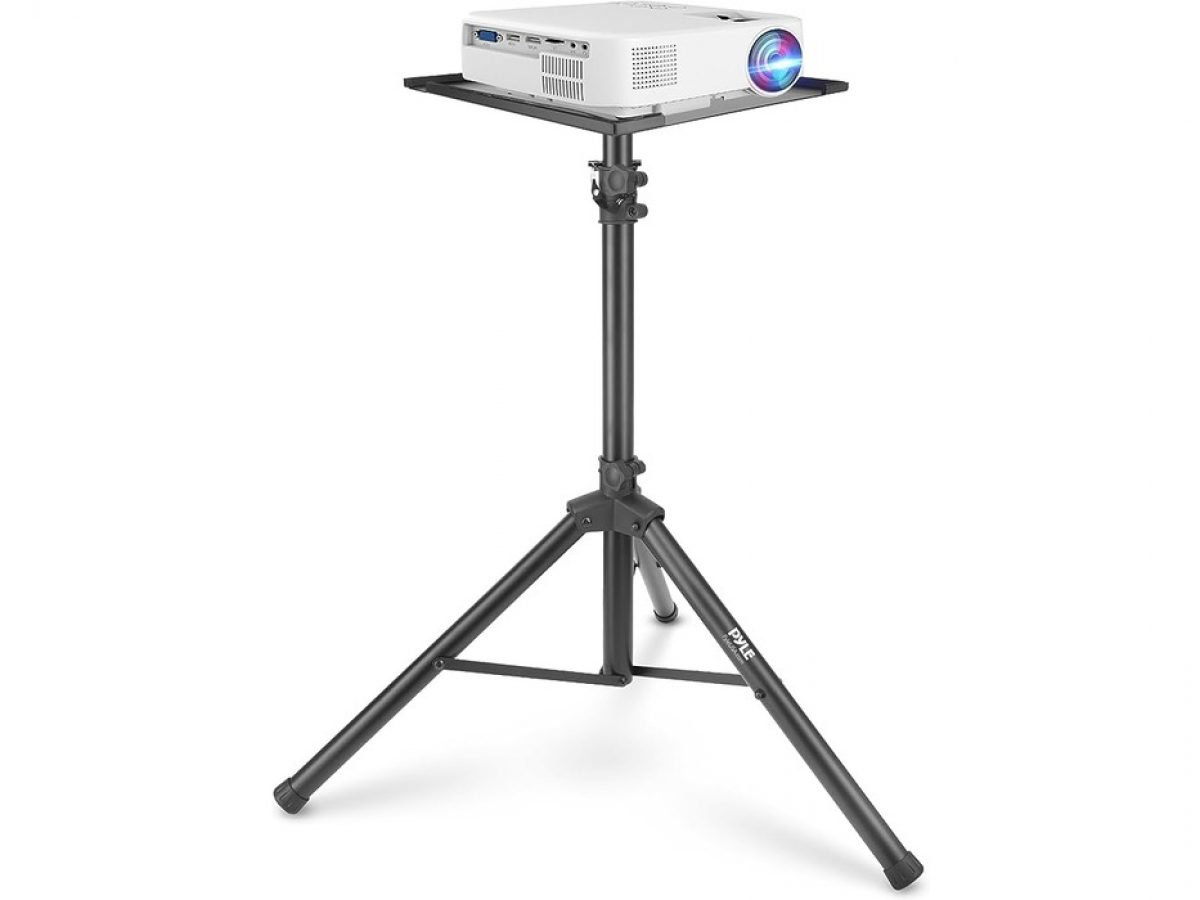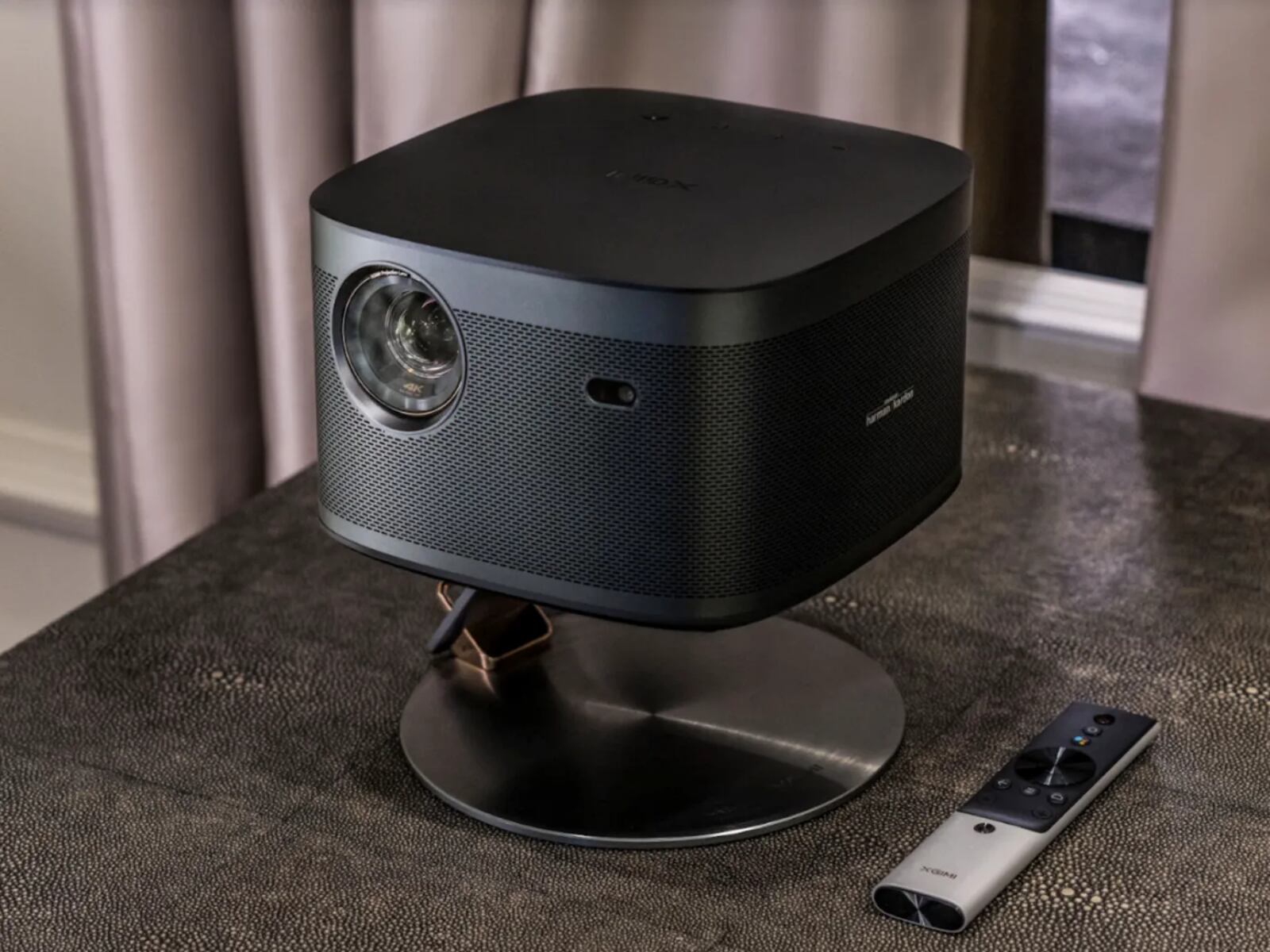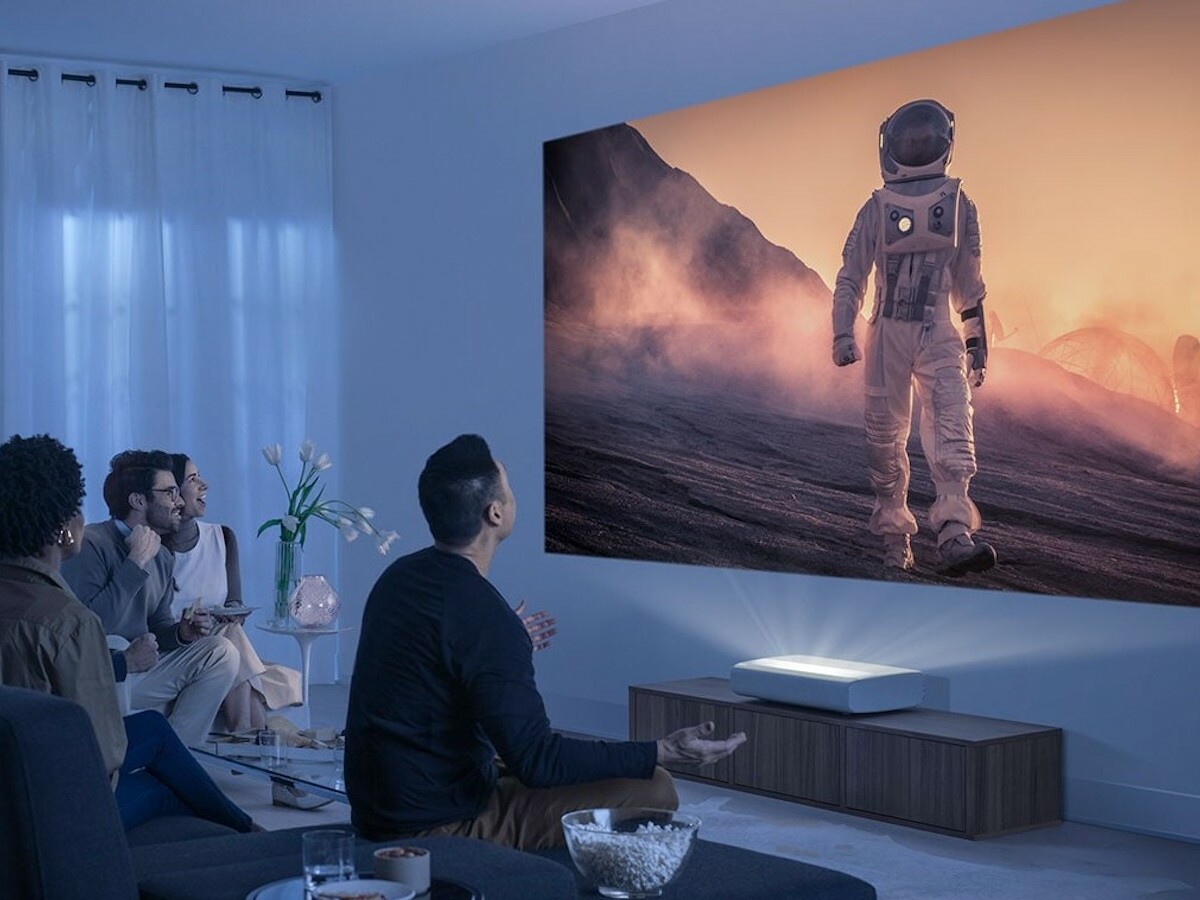Introduction
Welcome to the world of projectors, where you can immerse yourself in larger-than-life visuals and create a cinematic experience right in the comfort of your own home or office. While projectors are renowned for their exceptional display quality, one crucial aspect often overlooked is sound. Without sound, your multimedia experience would be incomplete, leaving you yearning for that immersive audio to match the stunning visuals.
In this article, we will delve into the world of sound on projectors and guide you on how to ensure you get top-notch audio quality to complement your viewing experience. Whether you’re using a projector for watching movies, delivering presentations, gaming, or any other multimedia activities, having a clear and rich sound is essential.
In the following sections, we will explore the basic components of projectors, how to connect them to audio sources, and troubleshoot any sound issues that may arise. Whether you are using the built-in speakers that come with your projector or connecting external speakers for a more immersive sound, we’ve got you covered.
By the end of this article, you will have a thorough understanding of how to get sound on your projector, ensuring that every multimedia experience is a feast for both the eyes and the ears. So, let’s dive in and explore the wonderful world of audio on projectors!
Understanding the Basics
Before we delve into the intricacies of getting sound on projectors, it’s essential to have a basic understanding of how projectors work and the components involved. A projector works by projecting an image onto a screen or wall. It consists of a light source, an imaging device, and optics to display the image.
When it comes to sound, projectors typically have built-in speakers. These speakers are designed to provide audio output directly from the projector itself. However, the quality and volume of sound from built-in speakers may not always be sufficient, particularly for larger rooms or when you want a more immersive experience.
To enhance the audio quality, you have the option to connect external speakers to your projector. This allows you to enjoy a more robust and dynamic sound experience. Depending on the connectivity options available on your projector, you can connect speakers using audio cables, HDMI, or wireless connections.
It’s worth noting that not all projectors have the same audio capabilities or connectivity options. Some models may have limited audio output, while others may offer more advanced features such as Dolby Digital or surround sound. Therefore, it’s crucial to refer to your projector’s user manual or specifications to understand its audio capabilities and available ports.
In the next sections, we will guide you through the process of connecting audio sources to your projector, using both the built-in speakers and external speakers. We will also provide troubleshooting tips for common sound issues you may encounter. So, let’s move on to the practical aspects of getting sound on your projector!
Connecting the Projector to Audio Source
Now that we have a foundation on the basics of projectors and sound, it’s time to explore the different methods of connecting your projector to an audio source. The method you choose will depend on the available ports and connectivity options on your projector and the audio device you wish to connect.
If your projector has built-in speakers and you are satisfied with the audio quality they provide, simply connecting the projector to the audio source is sufficient. To do this, you can use an HDMI cable or an audio cable, such as a 3.5mm auxiliary cable or RCA cable, depending on the available ports on both the projector and the audio source. Connect one end of the cable to the audio output of your source (e.g., laptop, DVD player, gaming console) and the other end to the corresponding audio input on the projector.
On the other hand, if you prefer to use external speakers for a more immersive audio experience, you will need to connect the projector to both the audio source and the external speakers. Again, check the available ports on your projector and the audio source.
If your projector supports HDMI-ARC (Audio Return Channel), you can connect an HDMI cable from the audio source to the HDMI-ARC-enabled HDMI port on the projector. This allows the audio signal to be sent directly from the source to the projector, and the sound will be routed to the external speakers connected to the projector.
If your projector doesn’t have HDMI-ARC and you have an audio output on your audio source, you can connect the audio output of the source to an audio input on the external speakers. Then, connect the video output of the source to the projector using an HDMI cable or other suitable video cable.
For wireless audio connectivity, you can use Bluetooth-enabled speakers and pair them with your projector if it has Bluetooth functionality. Simply enable Bluetooth on both the projector and the speakers, and follow the pairing instructions provided in their respective user manuals. Once paired, the audio signal will be transmitted wirelessly from the projector to the speakers.
Remember to consult the user manuals of your projector, audio source, and speakers for specific instructions and compatibility information. Now that you know the various methods of connecting your projector to an audio source, let’s explore how to make use of the built-in speakers or external speakers for optimal sound output.
Using Built-in Speakers
If your projector comes with built-in speakers, utilizing them is a convenient and straightforward option for getting sound. However, it’s important to note that the audio quality and volume may vary depending on the model and design of the projector.
To make the most out of the built-in speakers, ensure that they are positioned correctly. Check the user manual for recommended speaker placement, as it can affect the audio dispersion and overall sound experience. Some projectors have speakers located at the front, while others may have them at the sides or rear. Adjusting the projector’s position and angle can also impact the sound projection.
Once you have positioned the projector and activated the built-in speakers, you may find that the sound isn’t as robust as you desire, especially in larger spaces. In that case, you can explore the audio settings on your projector to adjust the volume, equalization, and other parameters to optimize the sound output.
Although the built-in speakers may suffice for casual viewing or small gatherings, keep in mind that they may not deliver the optimal audio quality for a truly immersive experience. If you’re seeking a richer, more dynamic sound, it is recommended to connect external speakers to your projector.
However, using the built-in speakers can be especially useful for portable projectors or situations where carrying additional speakers is not practical. It provides a hassle-free audio solution, particularly when you’re on the go and need a quick setup.
Now that you understand how to harness the potential of the built-in speakers, let’s move on to exploring how to connect and leverage external speakers for even better sound performance.
Connecting External Speakers
If you’re looking to enhance the audio quality and create a more immersive sound experience with your projector, connecting external speakers is the way to go. By leveraging external speakers, you can enjoy a richer and more dynamic audio output.
The method of connecting external speakers to your projector will depend on the available ports and connectivity options on both your projector and the speakers you wish to use. Here are a few common methods:
- Using Audio Cables: If your projector and speakers have compatible audio ports, such as 3.5mm auxiliary, RCA, or optical, you can connect them using the appropriate audio cables. Simply plug one end of the cable into the audio output of the projector and the other end into the audio input of the speakers. Ensure that the cables are securely inserted to guarantee proper audio transmission.
- Using HDMI: Some projectors and speakers may have HDMI ports, allowing you to connect them using an HDMI cable. Connect one end of the HDMI cable to the HDMI output of the projector and the other end to the HDMI input of the speakers. This method ensures both high-quality audio and video transmission in a single cable.
- Bluetooth Connectivity: If your projector and speakers support Bluetooth, you can pair them wirelessly. Enable Bluetooth on both devices and follow the pairing instructions provided in their respective user manuals. Once paired, the audio signal will be transmitted from the projector to the speakers without the need for cables.
When connecting external speakers, make sure to adjust the audio settings on your projector to ensure that the sound is routed correctly to the external speakers. You may need to access the audio settings menu on your projector and select the option for external speakers or audio output to ensure that the sound is not still being routed through the built-in speakers.
It’s important to note that the quality and performance of external speakers can vary, so it’s worth investing in high-quality speakers that suit your audio preferences. Consider factors such as power output, frequency response, and speaker placement to achieve the best sound performance. Experiment with different speaker positions and adjust the audio settings on your projector to fine-tune the sound quality.
With the external speakers connected and optimized, you can now enjoy a truly immersive audio experience that complements the stunning visuals of your projector. Whether you’re watching movies, playing games, or delivering presentations, the enhanced sound quality will elevate your multimedia experience.
Now that you’ve learned how to connect external speakers to your projector, let’s explore some troubleshooting tips in case you encounter any sound issues.
Troubleshooting Sound Issues
While connecting and setting up audio with your projector is usually straightforward, you may encounter sound issues along the way. Here are some common problems and troubleshooting tips to help you resolve them:
- No Sound: If you’re not hearing any sound from your projector, first check the audio source and make sure it’s playing audio. Then, verify that the volume on both the projector and the audio source is turned up. Additionally, check the audio connections to ensure they are secure and properly plugged in.
- Low or Distorted Sound: If the sound is too low or distorted, confirm that the volume is set to an appropriate level on both the projector and the audio source. Adjust the audio settings on the projector to adjust the sound output levels and equalization. If using external speakers, try adjusting their volume settings as well. In case of distortion, check if any audio cables are damaged or if there are any loose connections.
- Sound Delay: If you notice a delay between the audio and video when using external speakers, try adjusting the audio delay settings on the projector. This setting compensates for any latency between the audio and video signals.
- Noise or Interference: If you hear background noise or interference in the audio, ensure that there are no nearby electronic devices or electrical cables causing interference. Move any devices away from the projector and speakers to minimize interference. Additionally, check for any loose connections or damaged cables that could contribute to audio disturbances.
- Compatibility Issues: Some projectors and audio devices may have compatibility issues, particularly when it comes to audio formats and digital rights management (DRM) technology. Ensure that the audio source you’re using is compatible with your projector’s audio capabilities. If necessary, consult the user manuals or contact the manufacturers for further assistance.
If you’ve followed the troubleshooting tips above and are still experiencing sound issues, it may be helpful to consult the user manual or contact technical support for your specific projector model. They can provide you with tailored solutions and guidance to address any persistent audio problems you may encounter.
Remember that troubleshooting sound issues requires patience and a systematic approach. By following these steps and utilizing the resources available to you, you’ll be able to overcome any sound-related obstacles and enjoy a seamless audio-visual experience with your projector.
Conclusion
Getting sound on a projector is essential for a complete multimedia experience, whether you’re using it for movies, presentations, or gaming. By understanding the basics of projectors, connecting to audio sources, and troubleshooting sound issues, you can ensure that you get the best audio quality possible.
Throughout this article, we explored the different methods of connecting your projector to an audio source, including using built-in speakers and connecting external speakers. We discussed how to position and optimize the built-in speakers for better sound output and highlighted the various ways to connect external speakers, such as using audio cables, HDMI, or Bluetooth.
Furthermore, we provided troubleshooting tips to help you address common sound issues that may arise. By following these tips, you can identify and resolve issues such as no sound, low or distorted sound, sound delay, and interference.
Remember to consult the user manuals of your projector, audio source, and speakers for specific instructions and compatibility information. These resources will guide you in setting up and troubleshooting audio with your specific devices.
Now that you have a thorough understanding of how to get sound on a projector, you can fine-tune your audio setup to enjoy a truly immersive and captivating multimedia experience. Whether you’re hosting a movie night, presenting a slideshow, or immersing yourself in your favorite video game, the combination of stunning visuals and exceptional sound will elevate your entertainment or professional endeavors.
So, grab your projector, connect it to the audio source of your choice, and let your senses be delighted as you embark on a remarkable audio-visual journey.










